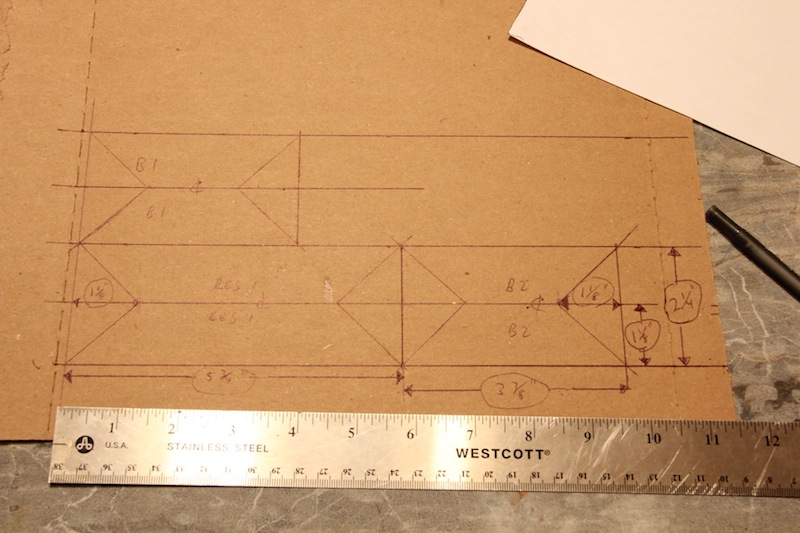---The languids are the little "shelves" in the mouth of the pipe. Air enters a hole in the bottom of the pipe and escapes from the small chamber enclosed by the "foot" and languid through a tiny gap (caused by a partial, thin cardboard gasket) between the languid and the bottom "lip" a.k.a the "cap". This tiny sheet of air is then directed at the top lip where fluctuating air pressure inside the pipe's top section (resonator) causes the sheet of air to oscillate rapidly in front and behind the top lip edge.---
As 2012 draws to a close, I thought it would be fitting to create a little noisemaker to ring in the New Year:
As 2012 draws to a close, I thought it would be fitting to create a little noisemaker to ring in the New Year:
I really felt the need to get one together for testing before I completed the rest of them, particularly as my wood thickness measurements were slightly different than John's or Melvyn's "defaults". I elected to go with pipe #8 - an E♭/D# pipe.
I first used a slice of posterboard for the mouth shim, but the pipe was a little weak, so I cut a small piece off a Diet Coke 24-pack box, and it seemed to do much better.
For testing I did a temporary push fit of an piece of the brass tubing, and used the black rubber tubing I purchased from Player-Care. Unfortunately, this 1/4" black rubber tubing is slightly over a 1/4" and it makes for a less than snug fit. The other two sizes of tubing I got from Player-Care (larger pipes, reservoir to pressure box) were sized more accurately. At first I thought the brass tubing might be too small, but a measurement done with a caliper showed the brass to be exactly 0.25" OD. (The extra-long piece of brass shown in the photos is only for the initial test, I'll use a much smaller length when I get to the finalizing stages.)
I made a stopper out of a piece of hardwood scrap, a bit of chamois, some 3/16" dowel and a macrame bead from a packet that my wife sacrificed for the cause.
Happy New Year!



















































